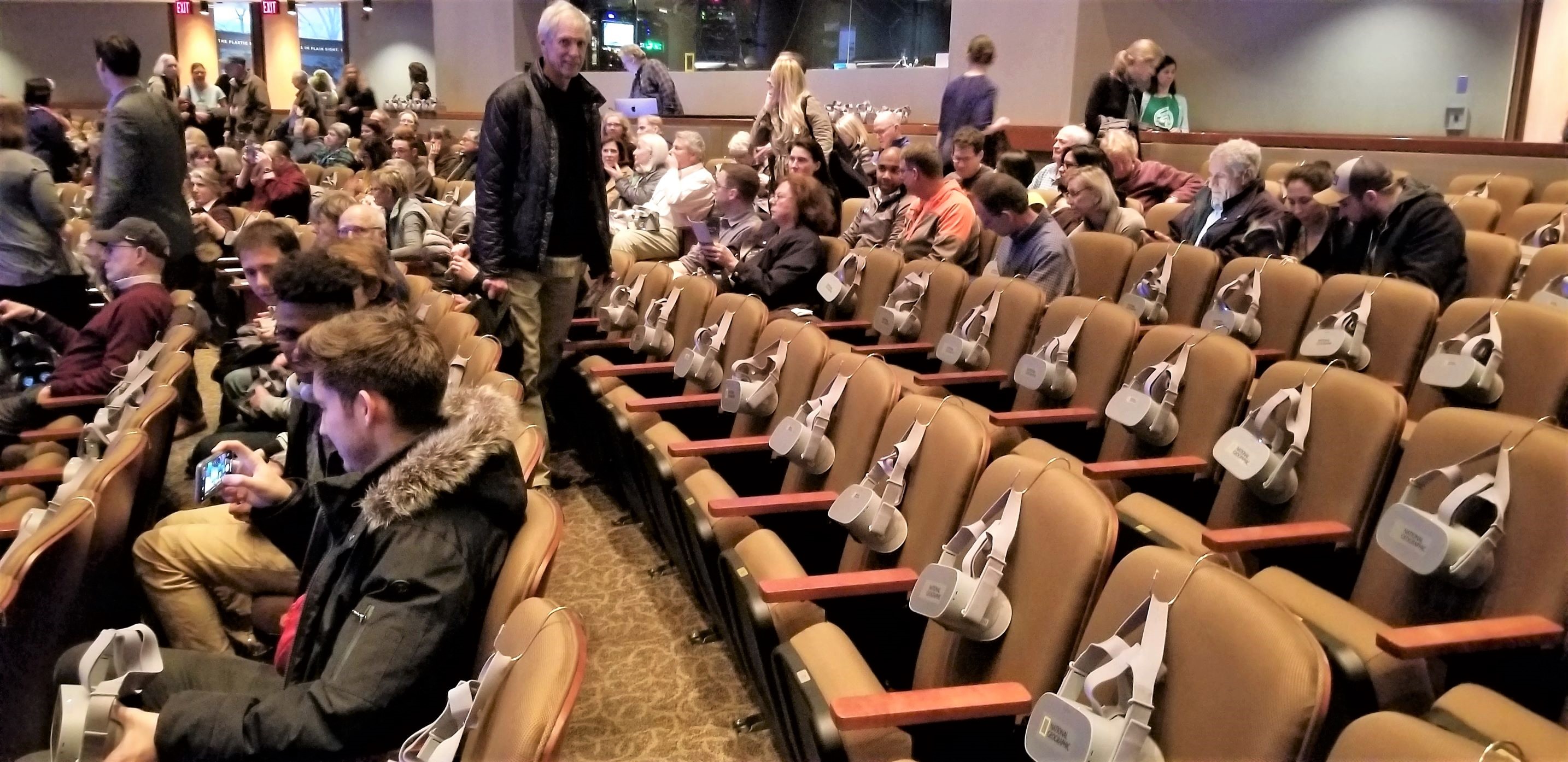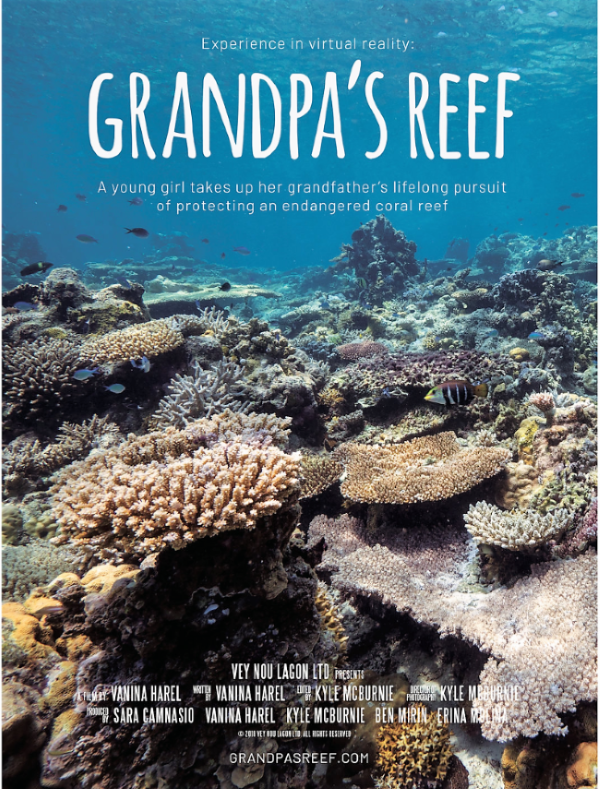- New video technology that films in 360 degrees brings viewers into the middle of the action and is set to become a powerful outreach tool to build understanding and empathy for wildlife and wild places.
- Small off-the-shelf cameras rugged enough to film in the wild are relatively inexpensive, easy enough for field researchers and other filming novices to use, and sufficiently sophisticated to collect videos of resolutions higher than 5 megapixels.
- At a recent presentation at National Geographic, four VR-360 filmmakers strongly endorsed the technology as a tool to inspire and nurture empathy in viewers for a range of conservation issues.
People of all ages love wildlife videos, whether it’s seeing previously unheard-of species, species interactions, or baby animals at play. New video technology that films in 360 degrees brings viewers into the middle of the action and is set to become a powerful outreach tool that can build understanding and empathy for wildlife and wild places.
As the use of virtual reality (VR) for teaching, building awareness, and marketing grows globally, the conservation community is also testing the technology through various innovative applications, such as viewing the world through the eyes of another species.
Virtual Reality-360 video is another. VR-360 for conservation, in which video filmed in the wild is shown on VR goggles or a digital screen, is in the early stages of development but evolving rapidly.
VR-360 puts the viewer in the middle of the action, an ideal perspective to help conservation projects conduct outreach about a species, place or threat, or to generate support for a protected area or conservation initiative. Putting on a pair of VR goggles can virtually transport you anywhere, in an instant. It takes you to the site of the activity, where you feel more like a participant in, rather than a remote viewer of, the situation.
An emerging technology now available
It’s already possible to film in VR-360 and present results of acceptable quality with off-the-shelf, plug-and-play products, reviewed here and here.
Filming in 360 degrees initially required strapping several small video cameras together with the lenses facing in different directions and using special software to “stitch” together the video from each camera. Stitch lines can be visible, so current VR-360 cameras typically have just two fisheye lenses, each covering roughly 180 degrees. Model-specific software enables the user to stitch together the data from the two lenses to create a video file that sees in all directions, not just a rectangular screen in front of the viewer.
 |
 |
| Small off-the-shelf VR-360 cameras have a bulbous lens on each size (left) and are easy to use by research teams and other filming novices in the field. Images by Sue Palminteri/Mongabay. | |
Small point-and-shoot cameras rugged enough to film in the wild are relatively inexpensive ($400 to $600), easy to use (virtually plug-and-play), and sufficiently sophisticated to collect videos of up to 24 or 30 frames per second. Lower-cost models tend to be less rugged, produce lower-resolution footage, and lack features such as stabilization, compatibility with all smartphone systems, or smooth stitching software. More expensive off-the-shelf systems are rigs of multiple cameras that offer professional-quality video or other features, such as waterproofing, GPS tagging or on-camera stitching, but tend to be more complex to use.
VR-360 can be shared and used widely
On March 23, National Geographic hosted a presentation of VR-360 for conservation by cutting-edge producers at its headquarters in Washington, D.C. The group recently equipped its HQ auditorium for VR presentations, enabling an audience of up to 400, each wearing a pair of $200 Oculus Go goggles, to watch 360-degree videos simultaneously.
Despite a few remaining glitches (one video failed to launch) and the need for users to physically turn around in their theater-like seats, the VR-equipped auditorium — the city’s first — allows groups of people to collectively experience the immersive nature of VR-360 video. Encouragingly, the use by a large NGO of standard VR goggles hooked onto the backs of the chairs suggests that groups with far smaller budgets can also incorporate VR-360 technology into their outreach efforts.

The organization has been compiling VR-360 video in collaboration with Black Dot Films VR. Max Salomon and Malvina Martin, executive producers of Black Dot Films VR, have made more than 40 VR films for National Geographic. They presented four short stunning examples of their work, meant to represent their goal of taking people to places they are very unlikely to visit in person. Through their first clip, “Climbing Giants,” the viewer joins researchers climbing up a 3,000-year-old giant sequoia tree and sitting in the middle of its canopy more than 50 meters (164 feet) above the ground, looking out at the surrounding old-growth forest.

(Tip: Use your mouse to swipe up, down, and sideways for a better sense of the experience of VR-360 films)
A second video takes the viewer to Antarctica with photojournalist Paul Nicklen to film leopard seals. VR-360 video shows the rough southward journey, the tranquility of the icy destination, and the underwater environment with a curious leopard seal that swims past from various directions, occasionally chomping on a half-eaten penguin.

Salomon and Martin also managed to get a VR-360 camera on board the International Space Station, where you see an astronaut floating toward you but looking past you. When you turn around to see what he’s watching, you see the station’s window and Earth, far below.

The increasingly affordable current VR technology means you don’t have to be National Geographic to film in 360.
Vanina Harel, another panel participant, is a beginning filmmaker and National Geographic explorer who showed her first effort at VR, “Grandpa’s Reef,” a soon-to-be-available film documenting a community-based marine protected area in the Philippines. She had just two weeks to film at a site she hadn’t previously visited, and she collected video both above and below the ocean’s surface.

Her work, part of an educational campaign to inspire the next generation of ocean advocates, demonstrates that the process of collecting VR-360 video can be mastered by relative novices.
In fact, panel member Krzysztof Pietroszek, assistant professor of film and media arts at American University, told Mongabay, collecting 360 video, where the viewer is in the middle of the scene, is completely different from standard 2D filmmaking, and shifting to VR can make even experienced directors effectively feel like they’re starting over. Pietroszek’s back-to-back presentation of 2D and 360-degree versions of the same scene demonstrated the different visual and psychological effect of watching (2D) versus participating (360) in a movie scene.
All of the panel members gave strong endorsements of VR-360 video as a tool to inspire and nurture empathy in viewers: Pietroszek called VR-360 an “empathy-generating machine” that has major conservation potential. The panel’s take-home message was that VR-360 transports one from being an observer, in the case of a normal 2D video, to being a participant — an experience that Salomon of Black Dot Films VR said helps VR viewers remember the experience better and makes them more likely talk about it more with others.
Banner image of a giant sequoia researcher climbing up one of her study trees in California is from the Climbing Giants video on YouTube. Image courtesy of Black Dot Films VR for National Geographic Partners.
FEEDBACK: Use this form to send a message to the editor of this post. If you want to post a public comment, you can do that at the bottom of the page.
